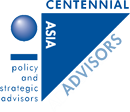- April 12, 2023
- Posted by: admin
- Category: Blogs

Although not as visible as the US, China or Japan, South Korea is an important partner for Southeast Asia. Its economic success provides a role model for emerging economies everywhere while its growing trade and investment profile in the region will help contribute to the region’s prospects in coming years. Since its performance will be important to us, we need to understand its future prospects – in particular, how its likely responses to its multiplying challenges could impact the region.
South Korea is an economic giant now but faces increasing risks
South Korea is greatly admired in Southeast Asia, and for good reasons. It has transformed itself from a dirt poor, war-torn country into the tenth largest economy in the world, all in a matter of two generations. It has executed one of the most impressive transitions from autocracy to democracy. The way in which South Korea overcame the Asian crisis of 1997-98 was a remarkable testament to its economic and social resilience. The country has produced corporate giants in cutting edge technologies such as Hyundai, Samsung and LG which can take on the best companies in the developed world. Certainly, its automobiles, semiconductors, mobile phones and ships are world-beaters. It has developed soft power on a global scale as well, with K-pop and Korean dramas winning fans across the world. Koreans such as former United Nations Secretary-General Ban Ki-Moon have also taken up top positions in international organisations.
Today, however, South Korea finds itself in a strategic quandary. The global environment has become more troubled. Rising protectionism and inward-looking policies in its biggest markets are compromising its export-driven growth model. Across its northern border, North Korea’s expanded nuclear and missile capacity substantially increases the security threat it faces. The growing confrontation between the US, its security guarantor, and its largest economic market, China puts South Korea in an awkward position, with no easy solutions.
Neither are things rosy on the domestic front. The demographic headwinds the country faces rank among the worst in the world. Labour market rigidities depress the ability of its people to enjoy well-paid and stable employment. Debt levels are also very high and there is deep unhappiness over the lack of affordable housing. In coming years, South Korean will be adjusting its policies to tackle these structural weaknesses because it knows that without overcoming the internal deficiencies, South Korea will struggle to adapt effectively to the more challenging environment. We will also see government agencies and corporates working out new strategies to collaborate with the country’s economic partners, including those in Southeast Asia.
Near term cyclical headwinds should ease by year-end
Currently, the predominant driver of cyclical prospects is the downshift in the semiconductor cycle as the pandemic’s one-off boost to consumer electronics demand has eased and customers are putting off replacement purchases in light of the macro-economic uncertainties. Corporate demand is also held back by tight financial conditions, headcount cuts and depressed confidence. As a result, the build-up of inventories that began in mid-2022 is still ongoing: Stockpiles of semiconductors in South Korea rose by 28% in Feb 23 over the preceding month. A recovery in prices is expected in the second half of the year as consumer demand recovers and supply cuts exert upward pressure on prices. But this recovery is likely to be modest initially.
A second key cyclical force is the lagged effects of government policy. The central bank has hiked rates by a hefty 300 basis points. Higher interest burdens will weaken spending in rate-sensitive sectors such as housing and consumer durables – given the high level of household debt in South Korea, this will be a bigger problem for it than elsewhere. The silver lining is that inflation is likely to moderate and allow the Bank of Korea to pause its tightening soon. Fiscal policy may also see a shift, away from the government’s initial focus on reducing deficit which is increasingly viewed as inappropriate in light of a substantial slowdown. With the national assembly elections due in May 2024, there is some impetus for the government to support struggling households and firms with more state assistance.
A more positive driver of near-term growth will be China’s rebound from its pandemic-induced slowdown. However, we suspect the boost from Chinese recovery could be relatively small. The overwhelming bulk of exports from South Korea to China are shipments of intermediate goods by South Korean firms to their own production facilities in China whose final markets are either in South Korea or the rest of the world, not indigenous Chinese consumer demand. Thus, a boost in Chinese domestic demand, which we anyway see as modest, will not significantly brighten prospects for South Korea.
Similarly, the recovery in tourism inflows may not help that much either. Indeed, it could lead to a net loss of economic activity for the simple reason that inbound tourist volumes are usually more than offset by outflows of Korean tourists. South Korea was one of the earlier economies to reopen to foreign tourists, lifting most restrictions to vaccinated travellers in Apr 2022. So, the boost to domestic services from the tourism recovery probably peaked in 2022.
Overall, we see the economy struggling for much of this year but stabilising and beginning a modest recovery by the year-end.
Long term growth prospects weighed down by structural factors
South Korea faces some structural challenges, the most formidable being geo-political troubles and weak demographics.
South Korea has been unfortunate in its geographic position, sitting close by a couple of the world’s most dangerous flash points:
- Not many countries in the world have to live next to a nuclear-armed regime with a history of extreme violence. North Korea is Seoul’s predominant security concern and there are signs that the dangers it poses are growing. In the past year, the northern regime has stepped up the pace of missile launches and seems to be getting ready for another nuclear test. It has developed other weapons including, it claims, nuclear-armed drones and hypersonic missiles. It has also demonstrated it can launch intercontinental ballistic missiles which could theoretically hit targets on the US mainland. China, embroiled in a growing confrontation with the US, is not likely to do much to restrain North Korea. North Korea’s leader Kim Jong Un is under domestic pressure because of severe food shortages and a struggling economy. So, mounting a calibrated provocation against South Korea to create a sense of crisis may seem to him to be an attractive way to divert people’s attention. A repeat of the 2010 provocations such as the sinking of a South Korean navy vessel or the bombardment of a remote South Korean island may be in the works.
- The frictions between the US and China are another long term headache for South Korea. As the US security guarantee is vital to deterring a military adventure by North Korea, South Korea has little choice but to stick closely with the US. However, as the US ramps up economic and military measures to rein in China, that will trigger clashes with China. In 2017, China imposed a series of penalties on South Korean companies in retaliation against the South Korean agreement to allow the US to deploy a missile defence system in the country. More such clashes can be expected which could create existential difficulties for South Korean firms that made big investments in China.
- A final challenge is the dangers that lurk around globalisation. South Korea has been a huge winner from liberalised trade but a rash of protectionist measures and industrial policies in many large economies now threaten the growth of world trade. South Korea, for instance, is miffed at how its auto producers will be disadvantaged by the Biden Administration’s policies to spur the development of electric vehicles.
Another huge problem dogging South Korea’s long term growth prospects is demographics:
- Its birth rate has been lower than even Japan’s by a significant margin and its total fertility rate of just 0.8 births per woman is among the world’s lowest. The problem has deep roots – a daunting combination of uncertain job prospects, the stresses of education, and financial burdens from high housing costs limit household formation. Marriage and childbirth are increasingly postponed, to the point that the current mean age of childbirth, currently 33.5, places a natural limit on the number of children that couples can have.
- All this points to an eventual decline in the population and labour force. An increasingly aged population will require large fiscal spending on healthcare and eldercare but there will be fewer productive workers to help finance this.
- Raising female labour participation could help offset the overall shrinking of the workforce. As the current generation of university-educated women advance in their careers, the gender participation gap will progressively narrow, especially in high-skilled and professional segments. Government targets for women in senior roles and changes in corporate culture could help remedy long-running cultural barriers. However, this will not be sufficient given the particular severity of the low birth rates. The boost in female labour participation is a one-off, whereas the shrinking workforce from low fertility constitutes a long-term drag.
Conclusion: despite challenges, don’t count South Korea out
When its economy crashed in 1997 during the Asian financial crisis, it seemed like South Korea was in a deep hole from which it would not escape. Yet, today, if one looks at the chart of long term growth, that crisis seems like just a blip. The speed and effectiveness with which Koreans, from policy makers to corporate leaders to ordinary citizens, reacted was a dramatic sign of the country’s extraordinary ability to come together and overcome the odds.
- One thrust will be to ramp up the share of R&D spending in GDP. In fact, this ratio has more than doubled to 4.81% in 2020 from 2.3% in 2001. Not many countries can do that. In time, the benefits of this burst of spending will come through in the form of innovation and higher productivity.
- Its largest companies are bold and command immense resources. For example, Samsung alone is committing more than USD300bn in the coming years to build new capacity and remain ahead of its rivals. Over time, South Korean companies will diversify supply chains away from China even though China’s ecosystem of super-efficient sub-contractors and infrastructure will be hard to replicate elsewhere. Southeast Asia, in particular Vietnam, will be a prime beneficiary for relocated economic activity.
- The government is also re-orienting its foreign policy to reflect this growing interest in our region. A Korean-ASEAN Solidarity Initiative is being mooted to expand on the previous government’s New Southern Policy.
It is this whole-of-country response that makes South Korea so formidable. Over the coming years, the country’s growth rate may slow as a result of the challenges it faces but the country will still find ways to remain a vibrant and competitive economic power. Its firms will continue expanding their global footprint and Southeast Asia will probably be a major beneficiary of that strategy.
